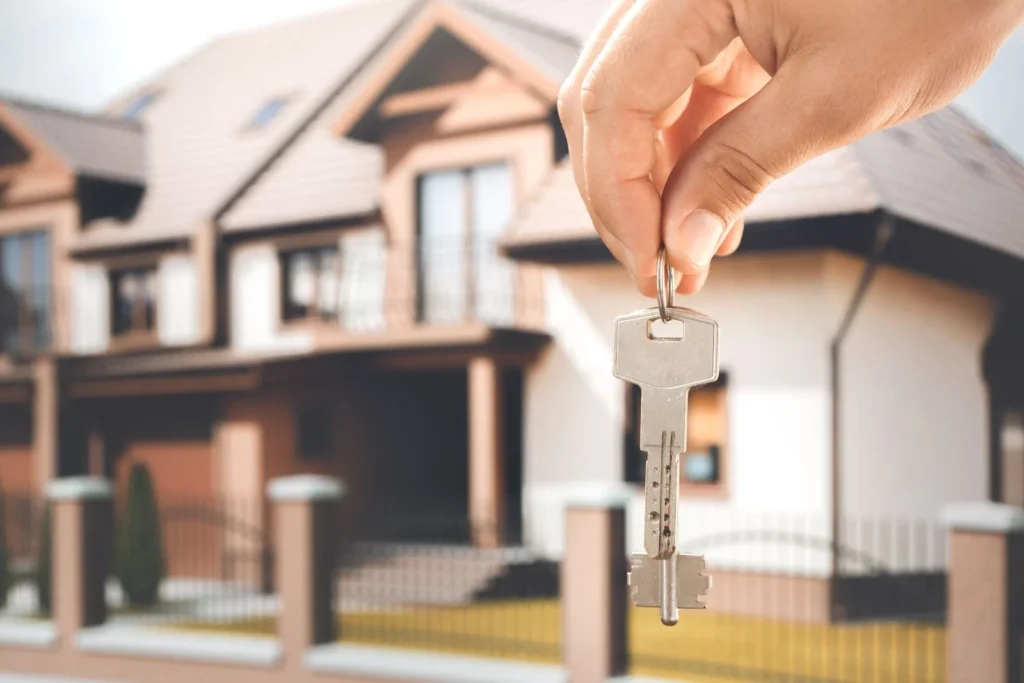
How to Rent Your Property: A Landlord’s Guide to Getting Started
Everything You Need to Know to Become a Successful Landlord
Renting out your property can be a lucrative way to earn passive income, build wealth, and increase your financial security. However, being a landlord requires more than just collecting rent every month. Whether you’re renting a single-family home, apartment, or vacation property, it’s essential to be well-prepared and knowledgeable about the process.
This comprehensive guide will walk you through the steps of renting your property, ensuring you are ready to manage your rental and become a successful landlord.
🏡 Step 1: Understand Your Responsibilities as a Landlord
Before you start renting, it’s crucial to understand what being a landlord entails. Renting out a property comes with legal, financial, and logistical responsibilities, including:
- Maintaining the Property: Keeping the property in good condition, addressing repairs, and ensuring it’s safe for tenants.
- Understanding Landlord-Tenant Laws: Every state and city has specific laws governing rental properties. Familiarize yourself with laws about rent control, security deposits, evictions, and fair housing.
- Collecting Rent: Establishing clear rent payment methods, dates, and penalties for late payments.
- Handling Tenant Issues: Addressing tenant complaints, resolving disputes, and dealing with evictions when necessary.
🔑 Tip: Consider hiring a property management company if you’re unsure about managing the property yourself or don’t have the time to handle all the details.
💸 Step 2: Set the Right Rent Price
Setting a fair and competitive rent price is essential for attracting tenants. Here’s how to determine what you should charge:
- Research Comparable Properties: Look at rental listings for similar properties in your area (size, amenities, location). Websites like Zillow, Apartments.com, and Rentometer can help you see what others are charging.
- Account for Property Expenses: Factor in your mortgage payments, property taxes, insurance, maintenance costs, and any property management fees.
- Offer Incentives: If your rent is slightly higher than other properties, you might need to offer incentives (like a month of free rent) to attract tenants.
🔑 Pro Tip: Setting the right rent price not only helps you attract tenants, but it also ensures that your property is financially sustainable.
📝 Step 3: Create a Solid Lease Agreement
A lease agreement is the legal contract that outlines the terms and conditions of renting your property. It’s crucial that the lease agreement is clear, comprehensive, and legally binding to protect both you and your tenants.
Your lease should include:
- Rent Amount: Specify the rent, due date, and late fees.
- Lease Term: Define the length of the lease (1 year, 6 months, etc.) and whether it’s renewable.
- Security Deposit: State the deposit amount, conditions for returning it, and any deductions that may apply.
- Tenant Responsibilities: Outline what tenants are responsible for (paying utilities, lawn care, keeping the property clean, etc.).
- Maintenance and Repairs: Clarify who handles repairs and maintenance (you or the tenant) and how to report issues.
- Pet Policy: Specify whether pets are allowed, including any pet deposit or pet rent.
- Rules and Regulations: Include policies on noise, smoking, subletting, and other expectations.
🔑 Tip: Consult with a real estate attorney to ensure your lease agreement complies with local laws and protects your interests.
📅 Step 4: Prepare Your Property for Rent
Before you start showing the property to potential tenants, make sure it’s in good condition. Cleanliness and repair are essential for attracting quality tenants.
- Inspect the Property: Walk through the property and take note of any repairs or maintenance needed. Fix leaks, touch up paint, and check appliances to ensure everything is working properly.
- Deep Clean: Clean the entire property, including carpets, windows, bathrooms, and kitchen. Consider hiring professional cleaners to ensure the property looks fresh and welcoming.
- Stage the Property: If the property is vacant, consider staging it to make it more appealing. This doesn’t have to be expensive — simple furniture, plants, and art can help potential tenants visualize themselves living there.
- Enhance Curb Appeal: Make sure the exterior of the property looks inviting — mow the lawn, trim bushes, and clean up the yard.
🔑 Pro Tip: A clean, well-maintained property can help you attract better tenants and justify a higher rent.
🏡 Step 5: Market Your Rental Property
Once your property is ready, it’s time to market it to attract potential tenants. The more exposure your property gets, the quicker you’ll be able to find reliable tenants.
Here’s how to effectively market your property:
- Online Listings: Use popular rental websites like Zillow, Craigslist, Apartments.com, and Facebook Marketplace to advertise your rental. Include clear photos, a detailed description, and essential information like rent, amenities, and location.
- Social Media: Share your listing on social media platforms like Facebook, Instagram, and Twitter. You can also join local rental or housing groups to target people searching for rentals in your area.
- Word of Mouth: Let friends, family, and coworkers know that you have a property available for rent. Referrals can often lead to reliable tenants.
- For Rent Sign: If the property is in a high-traffic area, place a “For Rent” sign outside to attract local tenants.
🔑 Tip: High-quality photos and a well-written description are key to getting potential tenants to take interest. Highlight the property’s best features and amenities.
📝 Step 6: Screen Tenants Carefully
Tenant screening is one of the most important steps in the renting process. A thorough screening helps you avoid renting to problematic tenants who might damage your property or fail to pay rent.
Key steps to screening tenants include:
- Application Form: Have all potential tenants complete a rental application form that asks for basic information (income, rental history, references, etc.).
- Background Check: Run a criminal background check to ensure the applicant has no history of serious offenses.
- Credit Check: Check the applicant’s credit score to assess their financial responsibility and ability to pay rent.
- References: Contact previous landlords and employers to verify their rental and employment history.
🔑 Tip: Always follow fair housing laws and ensure that your screening process is consistent for all applicants to avoid discrimination.
💵 Step 7: Collect Rent and Manage the Property
Once you have tenants in place, it’s important to manage the property effectively. This includes collecting rent, handling maintenance requests, and ensuring the property stays in good condition.
- Rent Collection: Set up an easy payment system (e.g., online payment platforms like PayPal, Venmo, or Rentec Direct) and ensure your tenants know the due date and late fee policy.
- Maintenance Requests: Create a system for tenants to report maintenance issues. Respond promptly to ensure tenants remain satisfied and your property stays in good shape.
- Regular Inspections: Schedule routine inspections to check the property’s condition and address any potential issues before they become major problems.
- Stay Organized: Keep detailed records of rent payments, expenses, repairs, and communication with tenants for tax purposes and any potential legal issues.
⚖️ Step 8: Know When to Evict (if Necessary)
Unfortunately, not all tenants will pay rent on time or follow the terms of the lease. If necessary, you may need to evict a tenant.
- Understand the Eviction Process: Eviction laws vary by state and locality, so be sure to research the legal process before starting.
- Notice Requirements: In most places, you must give tenants a written notice of late rent or violation before starting formal eviction proceedings.
- Seek Legal Advice: If you need to evict a tenant, consider consulting with a lawyer to ensure you’re following the law correctly and avoid complications.
🏁 Conclusion: Enjoy the Benefits of Being a Landlord
Becoming a landlord can be a rewarding and profitable venture, but it comes with responsibilities. By following these steps and being proactive about managing your property, you can ensure a smooth rental process and build long-term wealth through real estate.
- Understand your responsibilities as a landlord.
- Price your property competitively and create a solid lease agreement.
- Prepare and maintain the property for rental.
- Market your property effectively and screen tenants carefully.
- Stay organized in rent collection and property management.
With the right approach, being a landlord can provide you with steady cash flow, tax advantages, and the satisfaction of providing a great living space for your tenants.
Ready to rent your property? Start today and reap the benefits of being a successful landlord!








